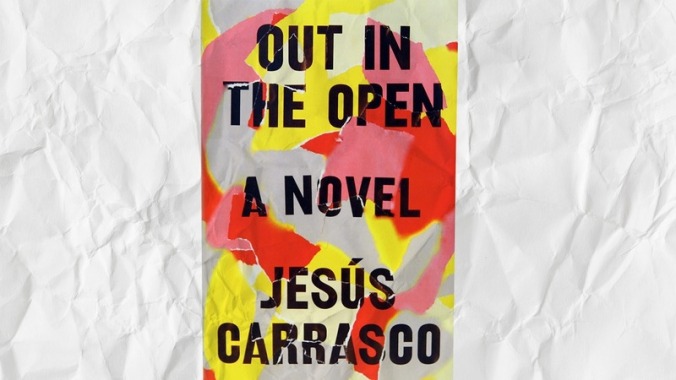Finally available in English, Out In The Open is a spry feat of style and story

A breakout success when it first struck the Spanish literary scene back in 2013, Jesús Carrasco’s Out In The Open tells a very simple story: danger hot on his heels, a boy flees across the arid plains of an unknown country toward hardship and pain. Carrasco’s style is terse and direct, and he omits all but the most necessary of details. As a result, the novel reads more like a parable or a fable, replete with iconic locations like a medieval castle, a vast desert, a sparse forest, and an abandoned village. The boy is simply “the boy,” the friendly mentor “the goatherd,” the villain “the bailiff.” Carrasco reduces his story to a series of abstractions and archetypes, grounded by violence, pain, and the relentless, blistering heat of an unforgiving sun. While he keeps readers on a strictly need-to-know basis with his characters, Carrasco spikes his otherwise spartan prose with more lurid descriptions of carcasses and corpses, describing dead dogs as “bags full of dislocated bones like giant chrysalises” and a “putrefying ox” as “an eyeless animal, its skin still intact. A stinking bag of bones in the midst of the new day dawning. A lighthouse guiding them to a safe harbor.”
Carrasco’s combination of direct, declarative prose, violent imagery, and archetypal characters has led to comparisons with Cormac McCarthy, though this doesn’t quite do justice to the particularities of Carrasco’s style. Whereas McCarthy’s prose is lucid and breathless—polysyndeton after polysyndeton—Carrasco’s stiffens up. A gunshot is not an event described in a rapid and extended burst of adjectives and verbs, it’s “a noise, cavernous and absolute, as if emerging from a long tube. A buzzing in his skull and a deafness that would take days to disappear entirely.” Favoring a more flat-footed aesthetic, Carrasco keeps his sentences short and ends them abruptly. Often, dependent clauses are separated from their independent clause and enclosed in their own sentences, creating a dreamlike sense of free-floating sounds, movements, and smells. Rather than reading as clunky, this telegraphic style adds to its mythic milieu, as though Out In The Open were a story that may only be read obliquely, a testament to the quality of Margaret Jull Costa’s translation.
This haziness contributes to the overall atmosphere that makes Out In The Open such a joy to read, and it lays the groundwork for the confined, dystopic world of the story. While most authors choose to build out the world of their novel, Carrasco chooses instead to cordon it off, creating something like a terrarium of life. There is a claustrophobia to things, an ignorance, an illogic. Spaces, events, and people are connected to one another, and to a past, to a future, and to a greater world outside the novel in ways that cannot be discerned. As a result, Out In The Open is exceptionally lean and spry; it moves at a rapid pace, as the boy heads farther into the desolate plain. Carrasco wastes no time explaining the world of the novel or how it got to be this way—larger cities and past prosperity are only alluded to—and there is only a relentless sense of persevering onward.
Consistent with that ceaseless rhythm, the ending resists closure, and readers are left with the sense that the boy’s hardships are only just beginning. It concludes not with a pessimistic tone, but certainly a dower one, and the novel expertly walks the razor-thin line between the two. The boy faces tribulations, and he is forced to make cruel choices, but Carrasco never condemns him to villainy or forecloses the possibility that things may, at some point, improve. But this tonal precision—along with the simplicity of the story and the allegoric quality of the world—leaves Carrasco very little margin for error. However, he and his capable translator, largely through a feat of stylistic showmanship and control, are able to pull off something of exceptional difficulty. Carrasco offers a direct, straightforward, and sparse world, story, and character, but makes it all feel energetic, dynamic, and mysterious rather than hollow, frivolous, or inconsequential. The only real problem, in fact, is that it moves too quickly and the reading experience is over too soon after it’s begun.
Purchase Out In The Open here, which helps support The A.V. Club.